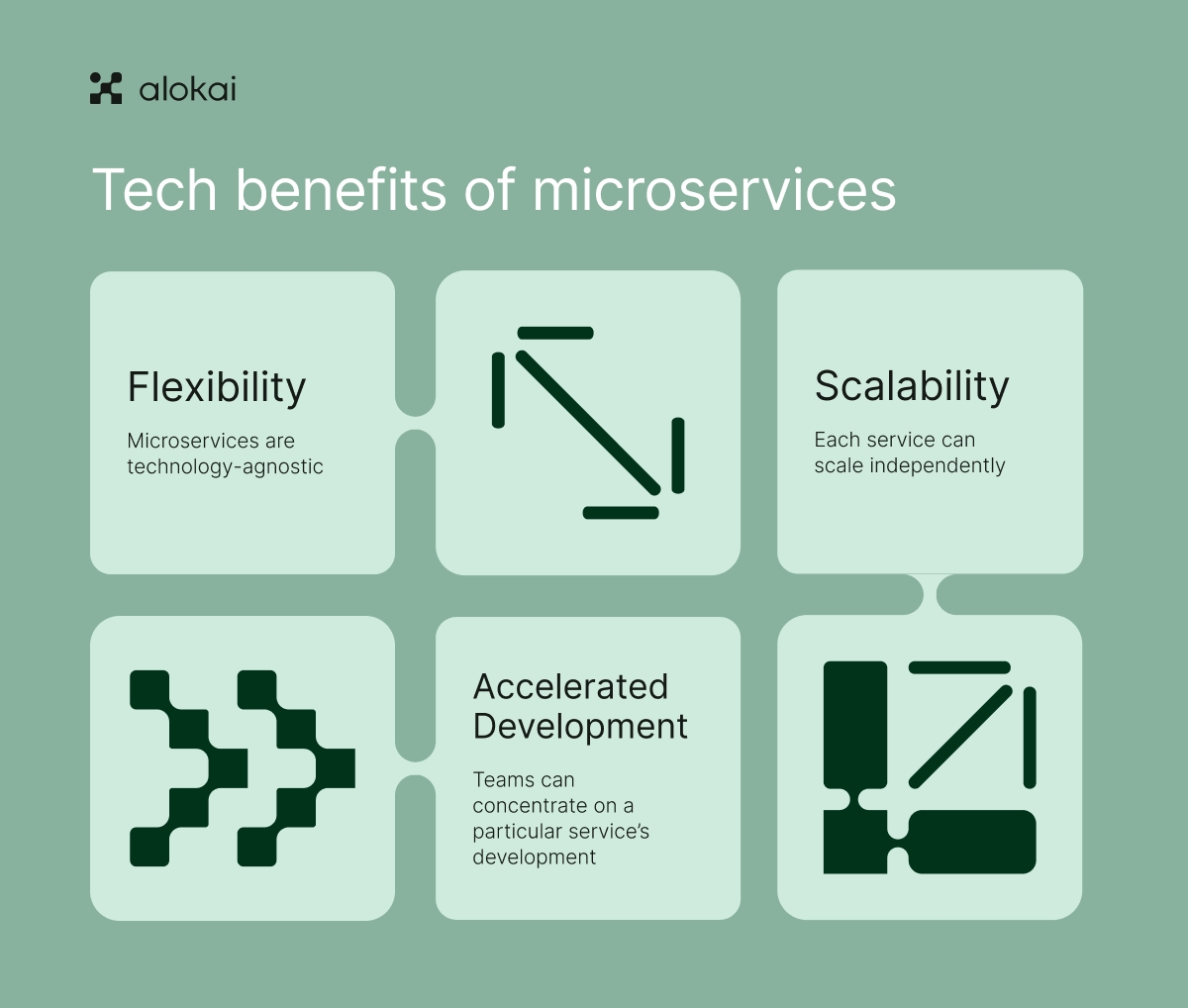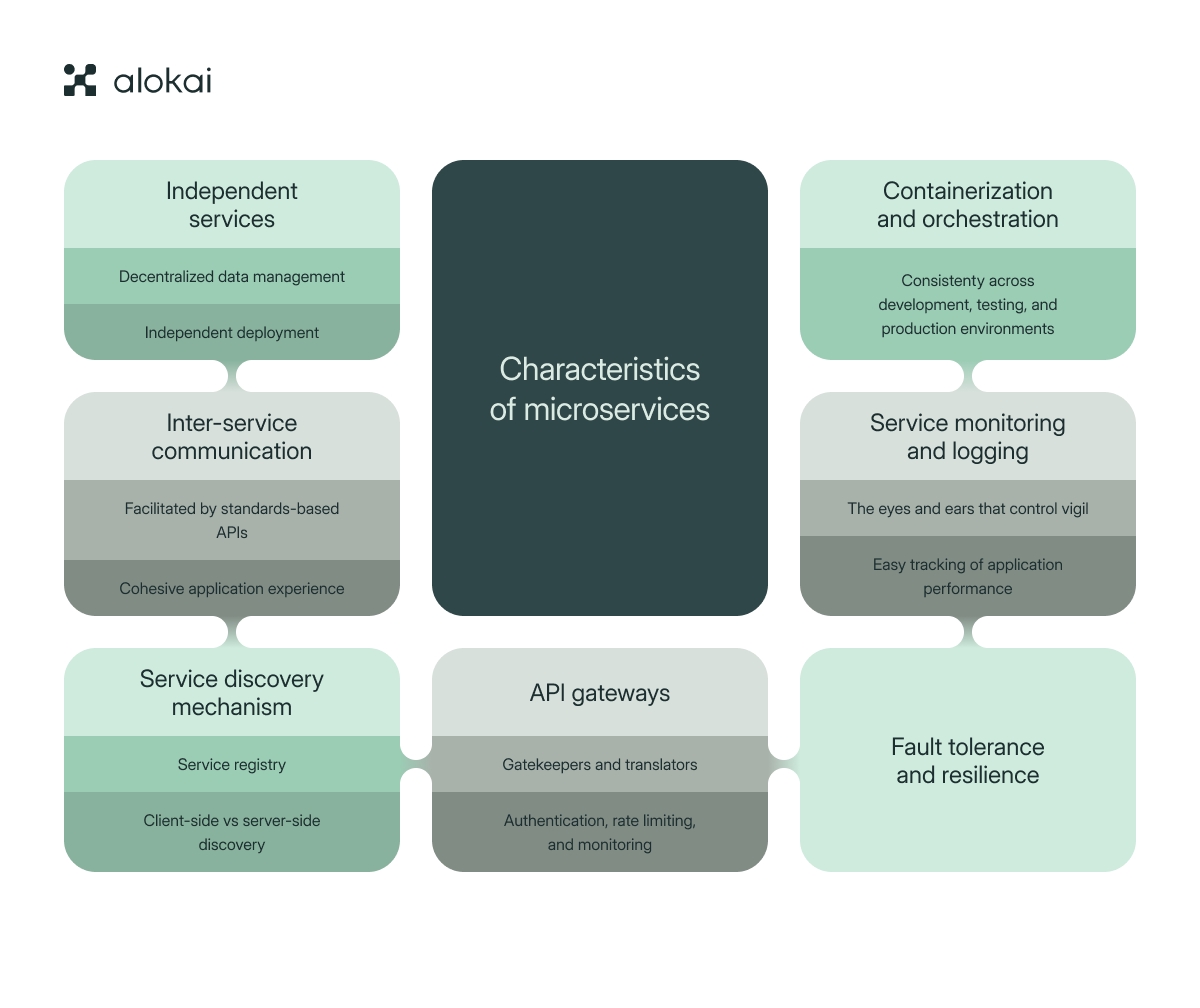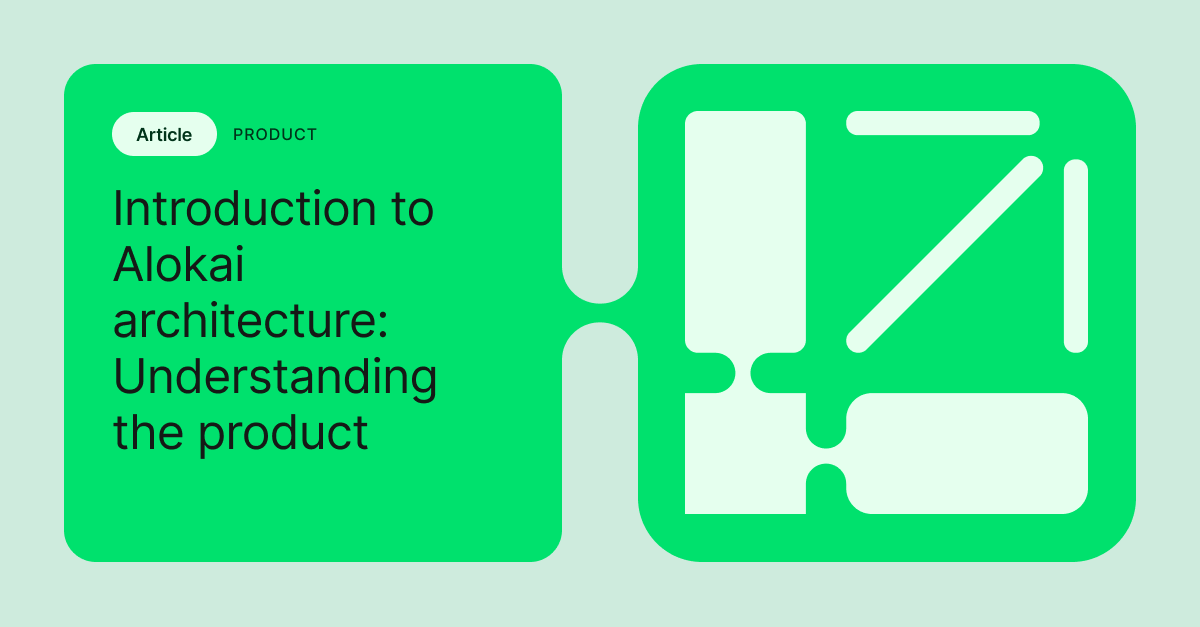Microservices architecture is a modern approach to building applications that breaks them into smaller, self-contained services. These services are designed to be independent, scalable, and easily deployable, allowing for greater agility and resilience than traditional monolithic architectures. This article explores the key characteristics of microservices, helping you understand why they matter for contemporary software development.
Key takeaways
- Microservices architecture features self-contained, independent services that are loosely coupled and scalable and support continuous integration and deployment, enhancing agility and performance.
- Independent services in microservices architecture allow for diverse technological choices, decentralized data management, and independent deployment, improving adaptability and resilience.
- Effective inter-service communication and service discovery mechanisms, such as service registries and API gateways, are essential for maintaining cohesive and efficient interactions within a microservices system.
Microservices architecture overview
Microservices architecture, or microservice architecture, is a modern approach to application development, offering a significant contrast to the monolithic and service-oriented architectures of the past. This dynamic framework empowers developers to create self-contained, loosely connected applications. Each component, or microservice, is a small, focused service that excels at performing a specific function, forming a cohesive ecosystem when combined.
Some key features of microservices architecture include:
- Self-contained and independent services, which are the core components
- Loosely coupled components
- Scalability and flexibility
- Fault isolation
- Continuous deployment and integration

By adopting microservices architecture, software development teams can build more agile, scalable, and resilient applications, enabling faster development cycles and better overall performance.
This architectural style thrives on autonomy, with microservices operating independently yet communicating effectively to form a robust application. Unlike the monolithic architecture, where applications are built as a single, indivisible unit, microservices are akin to a well-orchestrated symphony, where each musician plays their part, resulting in a harmonious performance.
By focusing on business capabilities rather than just technological layers, microservices architecture supports a more agile and scalable application development process, paving the way for enhanced innovation and rapid market entry.
Independent services
At the core of microservices architecture lie independent package services, each designed to execute a distinct business capability with surgical precision. Imagine a company where each department specializes in a unique task, from marketing to product development; each microservice functions similarly, mastering its domain and contributing to the larger business goal. This independence is not just a structural detail but a fundamental feature that enables rapid development and scaling, as services can evolve and adapt without being entangled in a larger, unwieldy system.
It’s the independence of these multiple services that allows for a diversity of technologies and programming languages to be employed, ensuring that the best tools are used for each job. Think of it as a team of experts, each with their own specialized toolkit, working together to build something exceptional. Moreover, this siloed approach to service management enhances the application’s resilience, as a failure in one microservice doesn’t spell disaster for the entire system.
Decentralized data management
In a microservices architecture, each service is akin to a self-governing state, managing its own database and thus ensuring a level of flexibility that centralized data management systems can seldom match. This decentralized strategy empowers each microservice to choose the most suitable database technology for its specific needs, be it SQL for transactional data or NoSQL for unstructured data, fostering a technology-agnostic environment.
The result is a more adaptable and responsive system, as each microservice can evolve its data management strategy independently of the others. This autonomy not only streamlines the development process but also mitigates the risk of a single point of failure that could compromise the entire application’s data integrity.
Independent deployment
Independent deployment is a hallmark of microservices architecture. It allows each service to be updated, improved, or scaled without disrupting the rest of the system. Imagine renovating a room in a house without having to vacate the entire building; this is the level of convenience independent deployment offers developers.
The benefits of independent deployment include:
- The ability to roll out new features or fix bugs in a specific service swiftly and efficiently
- Accelerating the delivery cycle
- Enhancing the application’s responsiveness to market demands
Moreover, when a particular service experiences a surge in demand, it can be scaled independently, ensuring that the entire application doesn’t need to be scaled up, which is both practical and cost-effective. This targeted approach to deployment and scaling exemplifies the agility and resourcefulness that microservices architecture brings, allowing businesses to respond dynamically to user needs.

Inter-service communication
The lifeline of microservices architecture is inter-service communication, a process by which individual services interact and coordinate with one another like diplomats exchanging information between nations. These interactions are facilitated by standards-based APIs, such as REST or gRPC, which ensure that the communication is efficient and reliable, even under heavy network loads. Through these protocols, a seamless and cohesive application experience is delivered despite the underlying complexity.
gRPC, in particular, offers various communication styles, including:
- Traditional request-response model
- Server streaming
- Client streaming
- Bidirectional streaming
These communication styles cater to the diverse communication needs of microservices. Furthermore, message queues provide a robust communication channel that ensures messages are not lost even when some services are temporarily unavailable, maintaining the integrity of the application’s functionality.
Service discovery mechanism
As microservices continuously evolve and scale, the service discovery mechanism becomes the navigation system that guides service instances through the dynamic landscape of a distributed application. Comprising the service provider, the service consumer, and the service registry, the service discovery component ensures that services can locate and communicate with each other efficiently. The service registry, in particular, is the heart of the system, maintaining a database of network locations for each service instance, similar to a directory service in a large organization.
The service discovery mechanism becomes indispensable for clients making requests within a microservices architecture with the ever-changing nature of service instances, which are assigned dynamic network paths. It supports load balancing by distributing incoming requests across available service instances, preventing any single service from becoming a bottleneck. This dynamic discovery and load management are akin to a city’s traffic system, redirecting vehicles to ensure smooth road flow.
Service registry
The service registry is a central knowledge base within a microservices architecture, akin to a city’s administrative records, keeping track of all service instances and their locations. When a microservice instance is brought online, it announces its presence by registering with the service registry, much like a new resident registering their address with city hall. This continuous updating of service information ensures that the system remains highly available and that the information is always current.
Clients, acting as the inhabitants of this digital city, use libraries to query the service registry for the latest information on available services. This allows them to route their requests to the correct destination, ensuring efficient and accurate communication within the architecture. The reliability of the service registry is paramount, as it underpins the entire system’s ability to function cohesively.
Client-side vs server-side discovery
Navigating a microservices architecture requires understanding the nuances of client-side and server-side discovery. In client-side discovery, the client holds the map and compass, determining the network locations of available service instances and managing the load balancing of its requests. This method imbues clients with the autonomy to make informed decisions about their interactions with services.
Conversely, server-side discovery delegates this responsibility to a central load balancer, which directs requests to the appropriate service instances as a traffic controller. Each method has its advantages, with client-side discovery offering finer control to the client, while server-side discovery centralizes and potentially simplifies the routing process.
API gateways
In the bustling digital metropolis of microservices architecture, the API gateway is the main thoroughfare, directing traffic flow between the outside world and the microservices within. They act as reverse proxies, taking on the role of gatekeepers and translators, ensuring that clients' requests are routed to the appropriate services. This abstraction layer simplifies the client’s interaction with the underlying services, like how a concierge assists hotel guests by directing their requests to the right department.
Beyond routing, API gateways perform various administrative roles, such as authentication, rate limiting, and monitoring, akin to a city’s governance, ensuring the smooth operation of its services. They also contribute to securing the system by applying policies that protect against threats and managing load balancing to distribute requests efficiently among services. By centralizing these functions, API gateways relieve individual microservices of these responsibilities, allowing them to focus on their core business logic.
Fault tolerance and resilience
In the interconnected web of microservices architecture, resilience is the ability to withstand and recover from failures, much like a city’s infrastructure remains functional despite adverse events. Fault tolerance is embedded in the design, ensuring that an issue in one microservice does not cascade and bring down the entire system. Redundancy is a key strategy, similar to having backup generators; it involves running multiple instances of a service to guarantee availability even if one fails.
Timeout mechanisms and circuit breakers reinforce the architecture’s resilience by preventing prolonged failures and redirecting traffic to healthy services or fallback mechanisms. These strategies are akin to having emergency routes in a city, ensuring that services remain accessible and operational even when certain paths are obstructed.
Circuit breaker pattern
The circuit breaker pattern in microservices architecture functions similarly to its namesake in electrical systems, protecting against prolonged service failures. It operates in three states—closed, open, and half-open—managing access to remote services and monitoring their health. When services run smoothly, the circuit breaker remains closed, allowing normal interactions.
However, should consecutive failures occur, the circuit breaker transitions to the open state, halting all traffic to the affected service to prevent further errors. After a predefined timeout period, it enters the half-open state, allowing a limited number of test requests to verify if the service has recovered. If these succeed, the circuit breaker closes again, resuming regular traffic flow, a strategy that ensures the system’s stability and reliability.
Service monitoring and logging
In the intricate network of microservices architecture, service monitoring and logging are the eyes and ears that keep vigil over the system’s health. With a diverse array of languages, platforms, and APIs, robust monitoring becomes essential to detect and diagnose issues promptly. Logging records the pulse of the microservices, capturing every request, error, and event, thus playing a crucial role in understanding the system’s behavior and troubleshooting problems.
Centralized log storage combines the diverse strands of log data into a coherent narrative, simplifying security enforcement, backup, and maintenance. Tools such as Spring Boot Admin leverage these logs to provide a comprehensive view of the application landscape, enabling developers and operators to:
- Keep track of application performance
- Identify and troubleshoot issues
- Monitor system health
- Analyze trends and patterns
- Make informed decisions for optimization and improvement
You can keep your digital city running smoothly by utilizing centralized log storage and tools like Spring Boot Admin.
Containerization and orchestration
Containerization is the cornerstone of microservices architecture, encapsulating each service and its dependencies into a single, transportable unit. This method provides a consistent environment across development, testing, and production, akin to shipping containers that can be loaded onto any ship or truck without concern for compatibility. Containers also allow for the precise scaling of specific components, optimizing resource utilization and reflecting a more efficient approach to infrastructure management.
In this dynamic ecosystem, container orchestration tools, such as Kubernetes, play the role of city planners, ensuring that services are deployed, managed, and scaled in a coordinated fashion. These tools bring together the disparate elements of architecture, much like a city's infrastructure supports the seamless operation of its various districts and neighborhoods.
Benefits of microservices
Embarking on the journey of microservices architecture brings with it many benefits, key among them being enhanced scalability, flexibility, and cost-efficiency. The ability to scale services independently means that resources are used judiciously, aligning closely with demand and ensuring the system’s adaptability to changing workloads. This scalability is the backbone of a system that can grow and contract with the ebb and flow of user needs.
The architecture’s flexibility is evident in the way teams can focus on specific services, fostering an environment conducive to innovation. Cost efficiency is achieved through optimized resource allocation and reduced overhead. Together, these benefits form a compelling case for organizations to consider microservices architecture and service-oriented architecture as pathways to achieving their business goals. For more details, check our article about the benefits of microservices architecture.
Challenges in microservices adoption
While the road to adopting microservices architecture is paved with potential, it is not without its challenges. Some of the challenges include:
- Ensuring data consistency across the distributed system can be as complex as synchronizing the clocks of a sprawling metropolis.
- The operational complexity of managing a network of services can lead to challenges in network management and failover processes.
- Latency, an ever-present specter, can emerge from the increased number of inter-service communications, potentially affecting performance.
Adopting microservices demands a cultural shift towards DevOps, with cross-functional teams taking collective responsibility for their services’ success and failure. Furthermore, the diversity of technology stacks and programming languages can make maintenance both difficult and costly, requiring teams with expertise in distributed systems. These challenges underscore the need for deliberate planning and skilled execution when embracing microservices architecture.
Summary
We’ve seen how microservices architecture resembles a living ecosystem, each service a unique organism thriving within a collaborative environment. From the independence and specialized focus of each microservice to the resilience and fault tolerance built into the system, this architectural style stands as a testament to innovation in software development. While the path to fully embracing microservices may be strewn with challenges, from data consistency to operational complexity, the benefits—scalability, flexibility, and cost-efficiency—cast a compelling vision for the future of application architecture. As businesses navigate the digital landscape, microservices architecture remains a beacon of adaptability and growth, guiding the way toward more responsive, robust, and user-centric applications.













